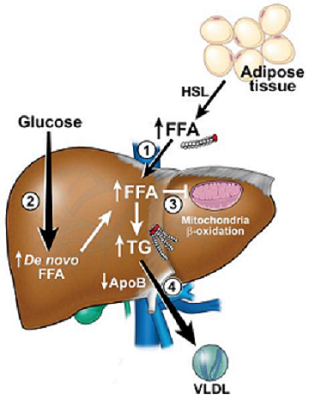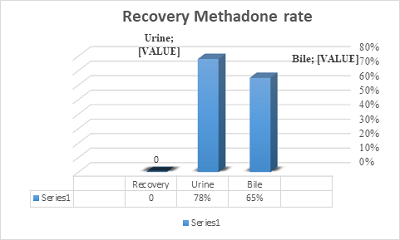About the Journal
Journal of Medical Toxicology Research is an open access peer-reviewed scholarly journal and aims to focus on the diagnosis, management and prevention of toxicity and other adverse health effects due to medications, occupational and environmental substances, and biological agents. In Journal of Medical Toxicology also includes all aspects of, pharmacokinetics, pharmacodynamics, Therapeutic drug monitoring. Adverse drug reaction, Pharmacogenomics, epidemiology, clinical research, pharmacoeconomics, randomized controlled clinical trials and rational pharmacotherapy. The journal publishes original articles, illustrative cases, review articles, book review, research article, and short communication.
Journal of Medical Toxicology Research focuses mainly on topics that include:
- Toxicity
- Acute poisoning
- Chronic Poisoning
- Drug Toxicity
- Toxicogenomics
- Clinical Pharmacokinetics
- Clinical Pharmacodynamics
- Chemical toxicology
- Clinical Toxicology
- Genetic Toxicology
- Heavy Metal Toxins
- Molecular Toxicology
- Nano Toxicology
- Reproductive and Developmental Toxicology
- Emergency Medicine
- Surgical Toxicity
- Drug side effects
- Drug Interactions
The Journal of Medical Toxicology Research is competently supported by prominent Editorial Board members and manuscripts submitted by authors will be evaluated on Editorial Manager System by Editors & reviewers of particular expertise in the same field to ensure that the published articles are of high quality with accurate and reliable information & data for the betterment of scientific community.
Submit manuscript Online Submission System or send as an e-mail attachment to the Editorial Office at medtoxicology@journalsoa.org
Toxicity
The science of poison that studies toxic substances with respect to their: source, properties, mechanism of action, toxic effect, detection, clinical manifestations and management etc. Toxicity can affect the animals, plants, bacteria and humans beings. Toxicity is basically three types-acute toxicity, sub chronic toxicity and chronic toxicity In U.S. there were 667 poison exposure reported per 100,000 populations. The highest incidence of poison exposure occurred in below 5 years of age group (8,327 and 8,085 exposures/100,000 children in the respective age groups) . In US 2015, According to U.S. Poison center approximately 78.4% of poison exposures were unintentional (general, environmental, bite, food poisoning, occupational and unknown), 17.6% were intentional(Abuse, misuse, Suspected suicide, unknown), ,and 2.4% were adverse drug reactions99% of poison exposures are unintentional below the age group of 6 years.
Related Journals of Toxicity
Journal of Environmental & Analytical Toxicology, Neurotoxicity Research, Journal of Clinical Toxicology, Toxicology, Toxicological Sciences, Archives of Toxicology, Journal of Toxicological Sciences, Toxicity Journals.
Acute Poisoning
The term Acute Poisoning describes the toxic effects of a substances such as drugs and chemicals that result either from a single dose or from multiple exposures in a short duration of time (usually less than 24 hours).The common symptom of acute poisoning is Headache, Nausea, Sweating, Irritation, Swelling, Affect metabolism, Seizures, Dizziness, Increased heart rate, pain, etc. In Malaysia 1999, 1798 cases were reported below the age group of 4 years, 1029 cases were reported below the age group of 10 years, 1058 cases were reported in below the age group of 15 years, and 1794 cases were reported below the age group of 20 years. For the treatment of acute poisoning Ipecac syrup, activated charcoals, Gastric cleavage, cathartics are used.
Related Journals of Acute Poisoning
Journal of Clinical Toxicology, Journal of Pharmacology and Clinical Toxicology, , Drug and Chemical Toxicology, Journal of Pharmacology and Clinical Toxicology.
Chronic Poisoning
The term Chronic toxicity describes the toxic adverse effect of substances such as drugs and chemicals from the repeated exposure in a longer duration of time( month or years).The common symptom of chronic poisoning is Cancer, Damage to kidneys, Damage to the brain, Damage to the other organs, Affect an unborn child.. There are so many factor that increases or decreases the toxicity of stressors, Chemical and Biological factor that influence the toxicity. An average of 6 people dies of alcohol poisoning each day in the US. In US approximately 18 women die every day due to prescription painkiller overdose, more than 6,600 deaths in 2010. The number of prescription drug overdose death is now greater than those of death from opioids.
Related Journals of Chronic Poisoning
Journal of Clinical Toxicology, Journal of Pharmacology and Clinical Toxicology, Drug and Chemical Toxicology, Journal of Pharmacology and Clinical Toxicology.
Drug Toxicity
Drug Toxicity is defined as Any Noxious and unintended response to the medicinal product if a medicine is properly prescribed and administered. Drug Toxicity is also called adverse drug reaction (ADR).Drug Toxicity is mainly four types- Cytotoxicity, Carcinogenicity, Mutagenicity, and Teratogenicity. Factor affecting drug toxicity are Patient’s Age, Genetic factor, Pathological conditions, Dose, Drug-drug interaction etc. Nausea, Vomiting, Diarrhea, Abdominal pain, Central nervous system dysfunction, Anemia are the common side effect of drug toxicity. Most common treatment for drug toxicity is giving activated charcoal, which binds the drug so the body can’t absorb the drug.
Related Journals of Drug Toxicity
Clinical Toxicity, Journal of Toxicology and Applied Pharmacology, journal of Analytical Toxicology, Journal of Drug and Chemical Toxicology, Journal of Drug Metabolism and Disposition.
Toxicogenomics
Toxicogenomics is consists of two words- toxicology and genomics. Toxicogenomics is the study about the collection and storage of information about the gene and protein activity in tissue of a living organism in response to foreign substances. Toxicogenomics two Principal goals-1. To understand the relationship between environmental stress and human disease susceptibility 2. To identify useful Biomarkers of disease and exposure to foreign substances.
Related Journals of Toxicogenomics
Molecular, Clinical and Environmental Toxicology, Essential concepts of Toxicogenomics, Genomics and Pharmacogenomics in Anticancer Drug Development and Clinical Response, Studies on Experimental Toxicology and Pharmacology.
Clinical Pharmacokinetic
Pharmacokinetic is the study of drug absorption, distribution with in body, and drug elimination over time. Clinical Pharmacokinetic is the application of clinical pharmacokinetic principles to safe and effective therapeutic management of drugs in an individual patient. Enhancing efficacy and decreasing toxicity of patient’s drug therapy. When dose are increased for most drugs steady state concentration increased in a proportional fashion leading to linear pharmacokinetics. When steady state concentration in a disproportional fashion after the dose is altered drugs follow nonlinear pharmacokinetics.
Journal Related to Clinical Pharmacokinetics
Journal of Clinical Pharmacology, Journal of Clinical Pharmacokinetics, Journal of Pharmacokinetics and Pharmacodynamics, European Journal of Drug Metabolism and Pharmacokinetics, Applied Clinical Pharmacokinetics and Pharmacodynamics of Psychopharmacological Agents.
Clinical Pharmacodynamics
Clinical Pharmacodynamics is the study of biochemical and physiological effect of drug and their mechanism of action at organ level as well as cellular level. Clinical Pharmacodynamics means the action of drug on body, including the receptor interaction, dose response phenomena, and mechanism of therapeutic and toxic action. Drug act either by receptor or non-receptor or targeting specific genetic changes. Stimulation, depression, Irritation, Replacement, Cytotoxic action, Antimicrobial action, Modification of immune status all these are the types of drug action. Enzymes, Ion channel, G-protein coupled receptor, and Transporters are types ofthe mechanism of action of drug.
Journal Related to Clinical Pharmacodynamics
Journal of Clinical Pharmacology, Applied Clinical Pharmacokinetics and Pharmacodynamics of Psychopharmacological Agents, Journal of Pharmacokinetics and Pharmacodynamics, European Journal of Drug Metabolism and Pharmacokinetics.
Chemical Toxicology
Chemical Toxicology is the study of adverse effects that occur in living organisms due to chemicals. It involves observing and reporting symptoms, mechanisms, detection, and treatments of toxic substances, in particular, relation to the poisoning of humans. The goal of toxicology is to collect the basic knowledge of the harmful actions of chemicals, study their mechanisms of action, and to estimate their possible adverse effect to the living organism on the basis of experimental work on biological test systems. The National Centre for Health Statistics at the Centre for Diseases Control and Prevention does collect information on many of the more commonly used drugs, In 2015 Number of death from the entire drug were 55,000.
Related Journals of Chemical Toxicology
Journal of Clinical Toxicology, Journal of Pharmacology and Clinical Toxicology, International Journal of Clinical Toxicology, Food and Chemical Toxicology, Chemical Research in Toxicology, Drug and Chemical Toxicology, Environmental Toxicology and Chemistry.
Nano Toxicology
Nano Toxicology is the study of the toxicity of Nano materials. Nano toxicology is the branch of Nano science. Nanomaterial (NMs) is generally defined as a substance having particles with at least one dimension of 1–100 nm in length. The toxicity of nanomaterial is classified mainly into two types-Biological Toxicity and Environmental Toxicology. Nano toxicology may cause Colon cancer, Asthma, Atherosclerosis, High blood pressure, Auto- immune diseases etc. Some of the particle features such as size of the particle, surface chemistry, and oxidative stress functions play important roles in Nano-toxicity.
Related Journals of Nano Toxicology
Nano medicine and Nano toxicology, Nano science in food and Agriculture, Modeling of Nano toxicity.
Clinical Toxicology
Clinical toxicology is the study of the toxic or adverse effects of substances, such as drugs and chemicals, in the body. Clinical Toxicology is the study of how chemicals and drugs affect the living organism. Clinical toxicology is focused on the diseases associated with short-term and long-term exposure to the various harmful substances. Adverse effect of the chemicals or toxic substances is known as chemical toxicology. Chemical toxicology is classified in three categories: Descriptive toxicology Mechanistic toxicology Regulatory toxicology.
Related Journals of Clinical Toxicology
Journal of Clinical Toxicology, Journal of Pharmacology and Clinical Toxicology, Journal of Molecular, Clinical and Environmental Toxicology, Toxicology and Clinical Pharmacology of Herbal Drug, Basic and Clinical Toxicology of Organophosphorus Compounds.
Molecular Toxicology
Molecular Toxicology is a field related with the effects of various chemical components on living organisms. The goal of toxicology is to collect the basic knowledge of the harmful actions of chemicals, study their mechanisms of action, and to estimate their possible adverse effect to the living organism on the basis of experimental work on biological test systems.
Related Journals of Molecular Toxicology
Journal of Biochemical and Molecular Toxicology, Chemical Research and Technology, In Vitro and Molecular Toxicology: Journal of Basic and Applied Research, Advances in Molecular Toxicology.
Genetic Toxicology
Assessment of the effects induced by physical or chemical agents on both DNA and on the genetic processes of living organism. Gentic toxicology is dealing with the harm effects of chemical, physical and biological agents or substances on the heredity of living organisms. genetic toxicology is defined as the property of chemical agent that harm the hereditary information inside the cell causing mutations, which cause cancer while genotoxicity is often confused with mutagenicity, all mutagens are genotoxic, but all genotoxic are not mutagens. National Institutes of Health has characterized the genetic toxicity of various classes of oxidizing and environmental agents and established genetic toxicity as a major cause of cancer. By the reduction of many genotoxic chemical substances in the environment, such as butadiene, benzene and urethane cancer should be prevented.
Related Journals of Genetic Toxicology
Journal of Genetic Toxicology, Genetic Toxicology and Environmental, European Journal of Genetic Toxicology, Principles of genetic toxicology.
Heavy Metal Toxins
Heavy Metal toxicity is defined as the accumulation of toxic heavy metals in the soft tissue of the body. Heavy metal poisoning may be following types- Aluminum phosphide poisoning, Arsenic poisoning, Beryllium poisoning, Cadmium poisoning, Lead poisoning, Mercury poisoning etc. Nausea, Vomiting, Diarrhea, Abdominal pain, Central nervous system dysfunction, Anemia are the common side effect of heavy metal toxicity. Lead poisoning mostly affects the infants in the United States. Chelating agent are used in the treatment of heavy metal toxicity, chelating agents are bind with the poison and excreted in the urine. Dimercaprol and Calcium EDTA are the common drugs used in treatment of metal poisoning.
Related Journals of Heavy Metal Toxins
Journal of Heavy Metal Toxicity and Diseases, Journal of Heavy Metal Toxicity and Cardiovascular Diseases, Toxicity of Heavy Metal and Biological Defense.
Reproductive and Developmental Toxicology
Reproductive Toxicology is a study of the adverse effect of an exogenous agent on embryo, fetus, neonate and pre-pubertal mammal and the adult reproductive and neuroendocrine systems. Reproductive Toxicity includes an effect on male fertility, female fertility, parturition, and lactation. Side effect of the reproductive toxicity in females areReduced fertility, Delayed Puberty, Neurobehavioral problems, Premature birth, Childhood cancer, Birth defects, Spontaneous abortion, Menstrual disorders. Aims of the Reproductive toxicology are to predict the adverse effects of chemicals and medicines on the ability of man to reproduce by assessing effects in animals. The substance that causes the developmental toxicity from developing stage to birth is called teratogens. In 1995, major developmental defects accounted for approximately 70% of neonatal deaths and 22% of the 6,500 deaths of infants (before 15 months of age) in the United States (March, 1999). Approximately 30% of admissions to pediatric hospitals are for health problems associated with such defects. Developmental toxicity is caused by drugs, lifestyle factors such as alcohol, diet, physical factors or chemical factors.
Related Journals of Reproductive and Developmental Toxicology
Developmental and Reproductive Toxicology, Teratogenesis and Reproductive Toxicology, Reproductive Endocrinology, Reproductive Immunology,Journal of Occupational Medicine and toxicology, Journal of Developmental and Physical Disabilities, In Vitro Cellular & Developmental Biology-Animal, Journal of Medical Toxicology.
 Spanish
Spanish  Chinese
Chinese  Russian
Russian  German
German  French
French  Japanese
Japanese  Portuguese
Portuguese  Hindi
Hindi 



